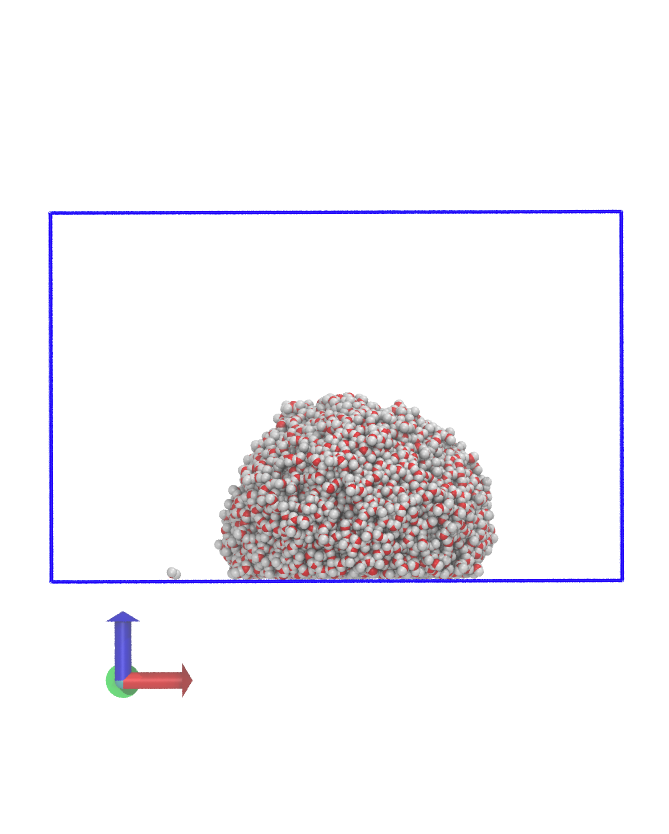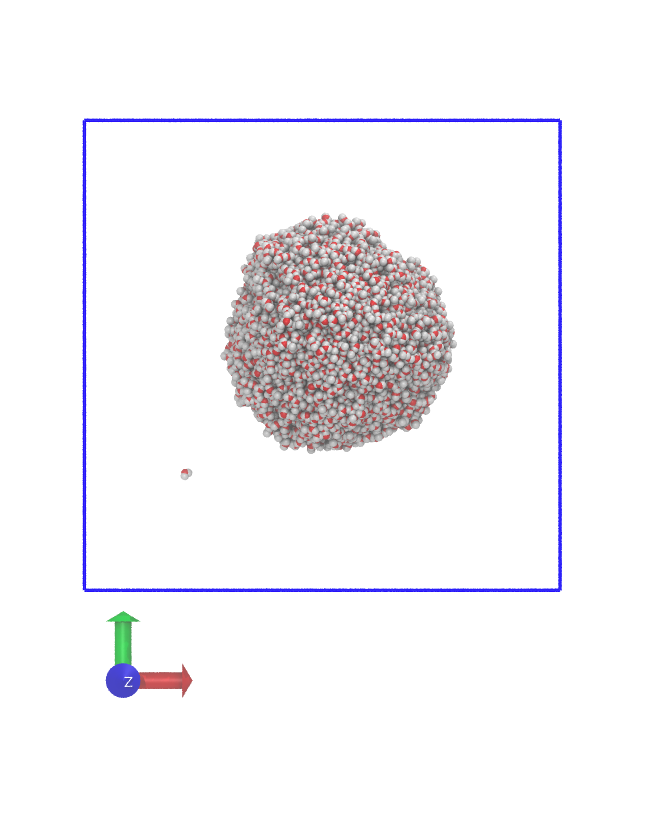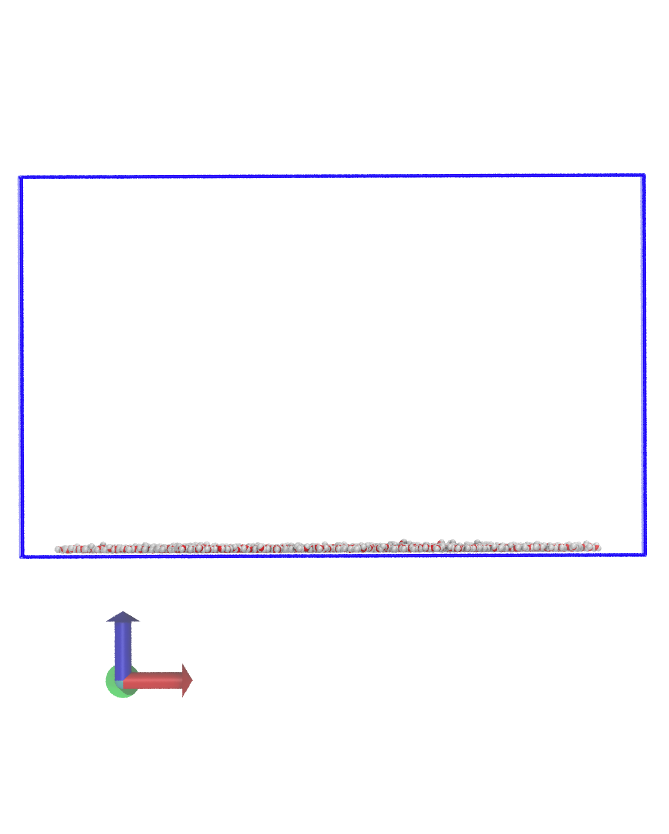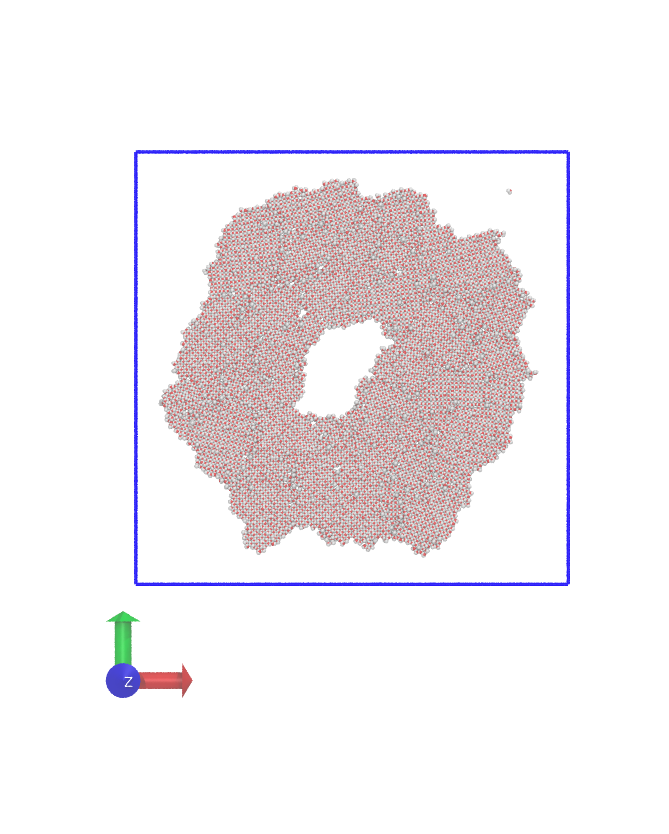Dear LAMMPS users and developers,
We done a simple test: water drop on a surface, using lj/wall 1043 as show at 10.1021/acs.energyfuels.5b02074.
At simulation was used the December 2014 LAMMPS version. The contact angle obtained was 105°, as show below (left: front view, right: top view):


Now, we are simulating the same data and input files, but with the Febrary 2016 LAMMPS version, without any changes applied. The simulation results shows a odd behavior, where the water molecules form a monolayer with a vaccum in center, as show below (left: front view, right: top view):


The simulation was run for 5 ns with 1 fs of timestep and 5832 water molecules.
We are greatful with any advice that explain the behavior obtained using the Feb 2016 LAMMPS version. Also why these changes occur?
Dear LAMMPS users and developers,
We done a simple test: water drop on a surface, using lj/wall 1043 as show
at 10.1021/acs.energyfuels.5b02074.
At simulation was used the December 2014 LAMMPS version. The contact angle
obtained was 105°, as show below (left: front view, right: top view):
!image.png|669x834!image.png|669x834
Now, we are simulating the same data and input files, but with the Febrary
2016 LAMMPS version, without any changes applied. The simulation results
shows a odd behavior, where the water molecules form a monolayer with a
vaccum in center, as show below (left: front view, right: top view):
!image.png|669x834!image.png|669x834
The simulation was run for 5 ns with 1 fs of timestep and 5832 water
molecules.
We are greatful with any advice that explain the behavior obtained using
the Feb 2016 LAMMPS version. Also why these changes occur?
impossible to say from just a few pictures. not all changes in LAMMPS are
fully backward compatible. if there are differences, they are documented
(for the current year) on lammps.sandia.gov/bug.html or on the
corresponding pages for previous years.
to figure out why and how this happens, you just need to follow the usual
path of debugging an input: create small test inputs and validate that each
component that you are using in your input is behaving the same between the
two versions and if not, check with the change log and if there is no
mention, compare against the current documentation and point out any
differences.
please also note, that no developer will be taking a serious look at this
until you have also tested against the very latest patchlevel (18 Jun 2016
currently).
axel.



